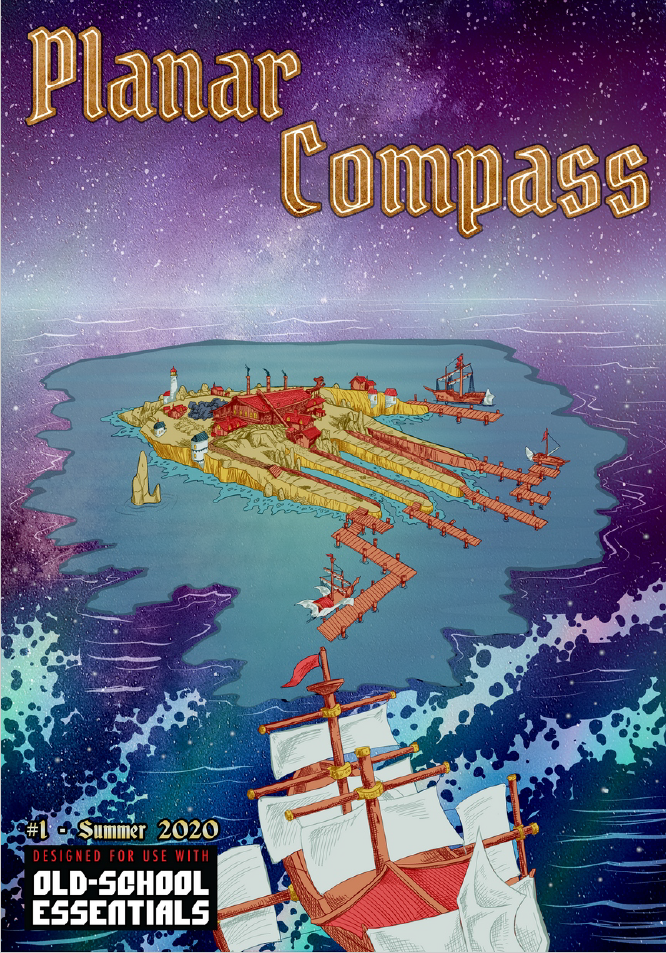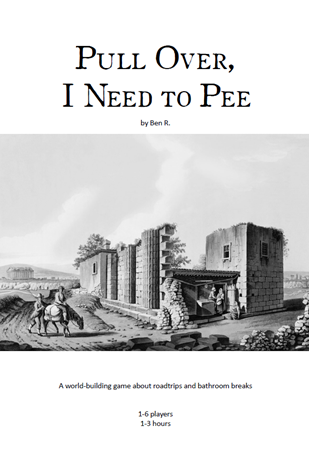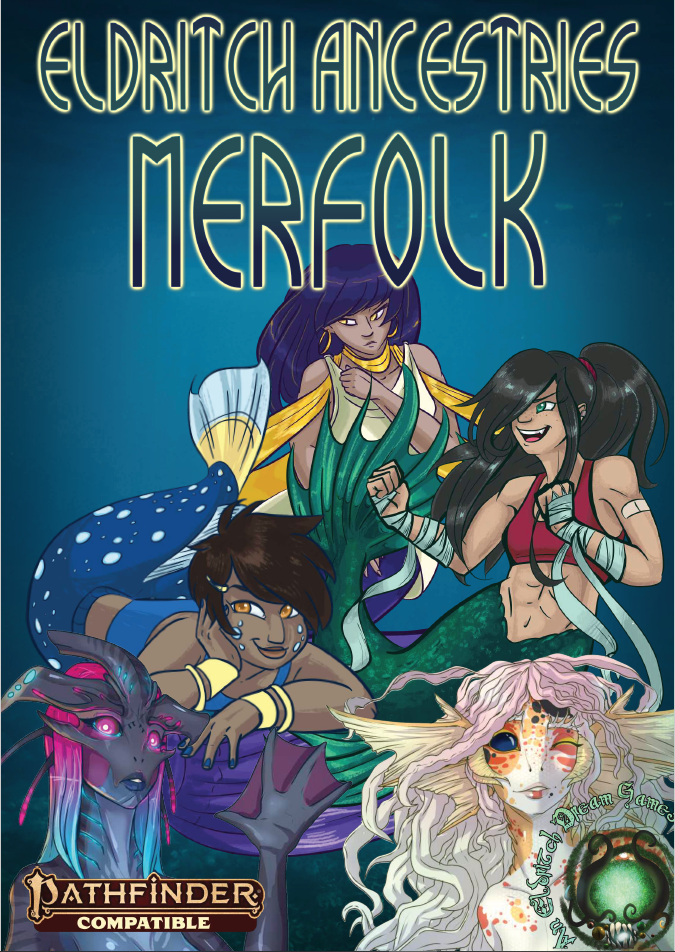Planar Compass 1

Artists: Chris Downey, DM Wilson
Publisher: Planar Compas LLC
Abstract
Planar Compass 1 is the first issue in a Zine for an island setting designed to be used with the Old School Essentials ruleset. The focus is a new location; Dreamhaven. A hand-shaped pirate island intended to be a home base for players setting out on a Planescape-style adventure. It’s a big zine, 60 pages long, and there is a ton of art and interesting content. Inside you will find: new player races, great NPCs, and multiple adventures to go on while visiting the island. It also includes a fully developed psionics system that takes up the back third of the book. Planar Compas doesn’t have enough content to be its own setting. However, It would be a great addition to any already existing island-themed campaign.
Who is this review for?
So, this book came out in 2020 and it has a narrow enough niche that I feel like it’s safe to assume it’s already reached most of its intended audience. If you play Old School Essentials (OSE), and you want to run a pirate-themed campaign set on the astral sea, and you want to include crunchy psionics rules; then you don’t need to listen to me, just go check it out for yourself. I’ve never played OSE, and I can’t give any analysis of the rules presented in this product. I can only review this book as I have come to it. An outsider, opening up random RPGs the Trans Rights for Texas bundle hoping to find hidden gems.
Review
The book is roughly divided into three sections. The first part Lays out the backstory, locations, and important characters of the island. It includes a keyed map of the island with 8 locations. The middle section has a variety of quests to get your players moving around the Island. Finally, the back section is a fully developed psionics ruleset complete with new spells and a unique casting system. This part is probably the hardest for me to review objectively since I don’t care that much for psionics.
The setting
The island of Dreamhaven is a waypoint for all sorts of travelers as they make their journey across the astral sea. Interdimensional pirates, merchants, and adventurers of every size and shape fill the Island to bursting. The setting isn’t large, but it comes with a full-color map with 8 keyed locations. Including docks, bars, and all the other places you would need to kick off a swashbuckling adventure. Each location has enough roomers, secrets, and plot hooks to keep your players interested in at least a couple of sessions.
The NPCs are the stars of this section. They are all evocative, and sympathetic. And thy have descriptions like “If some people are hammers and only see nails, Hector is a match and only sees kindling.” Chef’s Kiss. I could build a plot around any one of them. My one big complaint is the authors didn’t print a full-page map of the island anywhere in the book. The only map of the island is small (about a third of a page) and isn’t a good way to enjoy it as art, or show to players.
Playable Races
This section also includes 5 new playable races that inhabit Dreamhaven. That helps to give it a quirky personality. Most of these races are space fairing variations of familiar properties. Goblins and robots and such. But they are all unique and adapted to the setting enough to be charming. Although I liked the new twists, the race descriptions feel a little thin to me. No one gets more than a sentence or two describing them in this section. A few races get a full set of stats towards the back of the book, but others don’t so, it’s hit or miss if your favorite race gets any detail or not.
Adventures
There are four or five adventures in the book (depending on how you count them). Except for the dungeon located under the island, all the adventures have a linear flow. Go to a location, discover some information, and go to the next location. Each adventure has a fun premise and wraps up before they start to wear out their welcome. Each quest stands on its own. However, there is plenty of opportunities for players and GMs to make their own emergent stories. For instance, the gang of thieves presented in Pantry Raid could easily be causing trouble for the goblin dockworkers as. The way the players handle the thieves might affect who is willing to help them when they find out about the corps smuggling operation going on at the docks.
There isn’t anything game-changing here, but this section accomplishes what it set out to do. The adventures make the world feel lived in and connect the players to the characters and lore. Everything here compliments the setting without overshadowing whatever story the GM wants to bring in. Plus, there is a random bottle table which might be my favorite thing in this book.
Psionics
I was upfront about my lack of knowledge of psionics, but it’s clearly an important subject to the authors because they spent 20 pages out of the 60-page length of the book building a system from the ground up. Every time you use an ability you make a check to see whether it goes off or not. Activating or maintaining a psionic ability consumes energy from a resource pool that’s calculated from your character’s stats. This section also includes a good number of psionic abilities to choose from. Some of them are functional reprints of already existing spells, but some of them are creative and open-ended. There is a suite of abilities that involve manipulating molecules in various ways. As a chemist in a former life, I wish I had these powers when I was working in the lab!
Conclusion
The authors put a lot of effort into this product. The layout is clear and easy to read. The locations and characters are interesting and creative. You can find lots of good content here. However, for a 60-page zine, it ends up feeling a little thin for me. I think the independently developed psionics section just takes up too much space. Regardless, if the writer’s mission was to create a fully developed world you could drop your players into, then I think they came up short. Maybe Dreamhaven will be developed in subsequent issues of Planar Compass, but volume 1 by itself is better used as inspiration than as a complete setting.



